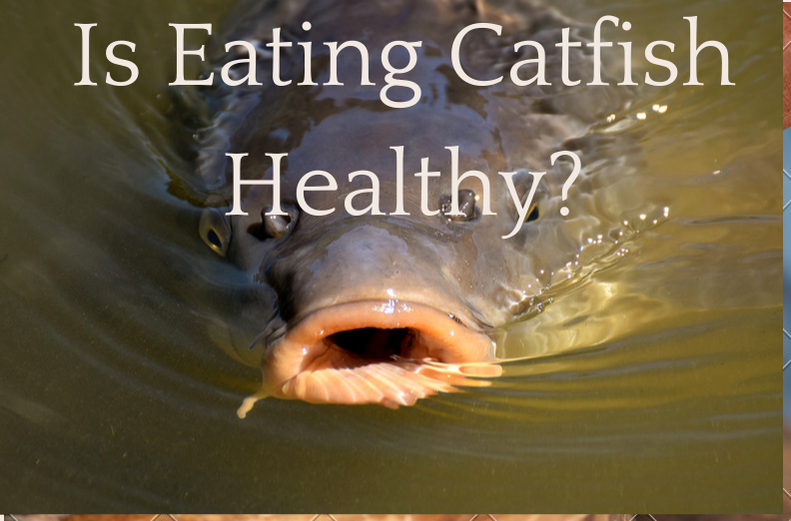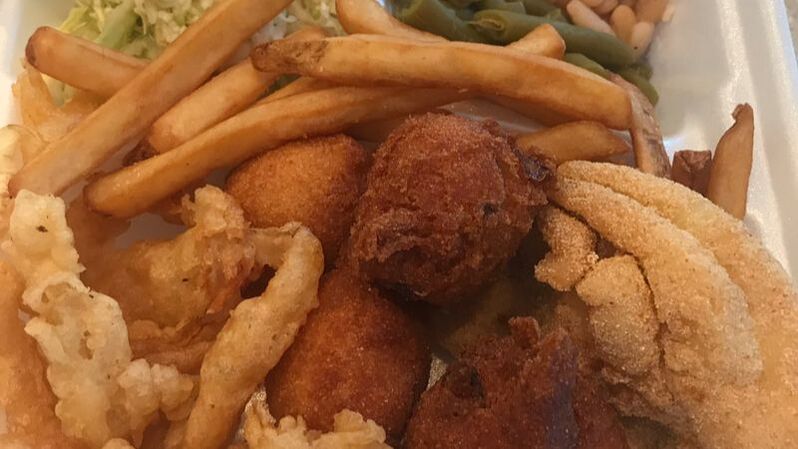|
The 'big three' types of catfish include Blue, Channel, and Flathead. Is catfish healthy? For the catfish lover, living around lakes, rivers and ponds has its perks. There are those that like to catch fish and those that like to eat fish. Still, there are those that like to catch and eat fish. Whatever your pleasure there's plenty of places around western Kentucky, Northwest Tennessee, Southern Illinois, and Southeast Missouri to enjoy both activities. If you think about it, it's almost a right of passage trying a piece of golden fried, crispy catfish for the first time. That sweetness dipped in a batch of tartar sauce is 'Oh so good.' Now, don't forget the fixins. Some of the more delicious sides that go hand-in-hand with a plate full of catfish are white beans, slaw, and hushpuppies, to name a few. As the weather gets warmer and the fish get to biting, you may ask the question, "Is catfish healthy?" The answer is, it depends. Catfish is a lean protein that's low in calories. It has omega-3 fatty acids that help lower blood pressure, decrease inflammation, reduce certain cancer risk factors, and helps keep your mind sharp. On the flip side, catfish has its fair share of omega-6 fatty acids that can raise blood pressure, cause blood clots leading to heart attack or stroke, and could increase inflammation that leads to water retention or edema. What are omega-3's and omega-6 fatty acids? Omega-3 is the 'good fat' that your body needs for overall health. It comes from the food we eat. There are a number of health benefits associated with omega-3 fatty acids including anti-inflammatory components. Omega-6 fatty acids have some health benefits but ultimately, having too much of this fatty acid could counteract the benefits of the omega-3's. How does catfish compare to other fish? Catfish is a sweet, light fish that’s lean, vitamin-enriched, inexpensive, and low in mercury. Many fish contain too much mercury making it unsafe to eat everyday and in large quantities. Dietary guidelines for adults suggests eating fish twice a week consuming eight ounces or more within the week. Two of the more popular fish that surprisingly fall into the category of high mercury fish are Ahi Tuna and Orange roughy. Both should be eaten conservatively. The FDA recommends that children and women who are pregnant limit their intake of fish due to potential high levels of mercury. Twelve ounces is the maximum consumption per week of low mercury fish and fish with high mercury levels should be limited to six ounces per week. Since catfish is one of five readily available fish that are low in mercury, this makes it very attractive to eat. It's also very filling meaning you will eat less of it and be full. How does catfish compare to salmon? Regarding caloric intake, a serving of catfish or 3.5 ounces meets up to 39% of your daily protein needs and it's only 105 calories. Salmon provides about half of your daily protein needs and has more than twice as many calories as catfish. Like catfish, salmon is rich in polyunsaturated fat or the omega-3’s. Farm-raised salmon is three times higher in the omega-6 fatty acids making it a much fattier fish as compared to wild-caught salmon. If you’re going to invest in salmon for heart health, choose wild-caught salmon. When comparing the cost of catfish to salmon, catfish is much less expensive plus it’s readily available to catch in rivers, lakes, ponds, and streams. Catfish cost about four dollars a pound compared to wild caught salmon that’s three to four times as expensive per pound. A good nutritional mix of an oil fish and a whitefish each week is a good meal plan. On a side note, whitefish aren't considered an oily fish since they only contain oil in the liver. Though a fried fish plate does look appetizing, baking or grilling your fish can be just as delicious. It's all about the preparation. What’s the best way to prepare catfish? Those from the south prefer to fry their catfish. Though frying will add calories to the low-calorie fish, changing the type of oil can reduce the number of unnecessary calories. Oils that aren't good for you and contain the omega-6 fatty acids include canola, sunflower, peanut, and vegetable oil. People tend to use these because they don’t overpower the flavor of the fish. Coconut oil is the healthiest option for frying your fish. It has a neutral flavor and won't overpower the taste of the fish. In addition to changing the oil in the frying process, keep the meal lean by easing up on the breading. Using a light coating of cornmeal or flour is just as tasty if not tastier than too much breading. To get rid of some of the fishy taste, many soak their fish in milk before frying. It's a similar process when hunters soak their wild game in milk to rid the meat of the 'gamey' taste. Another tip for getting rid of fishy fish taste. Remove all 'white-yellow' meat from the shoulders. Split the catfish fillet along the lateral line and remove the dark meat. Cut the remaining flesh in finger size pieces cutting across the grain. Toss the fingers in yellow mustard until coated evenly and lightly. Then toss in the breading and fry. The fish won't taste like mustard. Other than frying your fish, you can always bake it, grill it, or pan fry it. All three choices would be healthier than deep-frying. r will be go Where’s the best place to catch catfish? During the day, look for muddy water areas or overflows. Also good are deep structures like river bends, the base of drops offs or holes. These conditions are best for lake fishing. On cloudier days, fish are more likely to come to the surface. They’re bottom dwellers so it’s important to look for spots with more shade. Over by the dam is where you’ll find channel catfish. Channel fish like the rocks around the dam and they seem to like the water flow over a dam. After a good rain, new food sources are rushed in from the streams increasing catfish interest and activity levels. What’s the best bait? Catfish will eat just about anything. One of the top choices includes worms. In fact, worms are popular bait for most fish. They’ll work dangling under a bobber or on a sinker in creeks, rivers, ponds, or reservoirs. There are a couple of hooks that work best. One is the J-shaped hook that has the two barbed-wire tips and the other is a circle hook that keeps the fish from swallowing the hook. You could use minnows to snag a fish. If you’re fishing in a pond or a lake, make sure the minnows are alive so you can get the catfish' attention. In a stream or river, it doesn’t matter so much if they're dead or alive. In fact, dead is better. Stink bait is a good bait to use because it’s appealing to catfish only. Stink bait is just that, a stinky bait that usually consists of one or two ingredients. You might be able to clean out your refrigerator and make a good stink bait yourself. If it’s not stinky, you could still use it. Regardless of whether or not you eat catfish once a week, twice a week, or everyday, the key is keeping it lean and portion-controlled to promote healthy living. Moderation is a good thing and that includes eating fish.
4 Comments
|
Written by
Archives
December 2021
Categories
All
|


 RSS Feed
RSS Feed